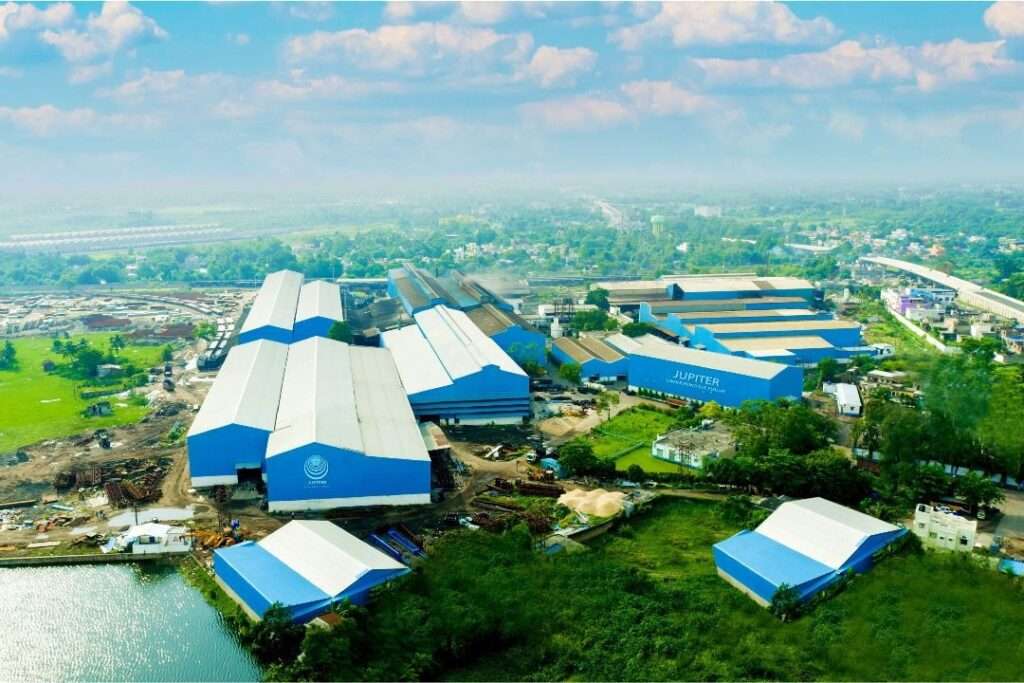Renewable energy is a cornerstone of India’s ambitious goal to achieve net-zero carbon emissions by 2070. This extensive expansion and integration of renewable sources is crucial to the country’s commitment to a sustainable development path.
As one of the globe’s most swiftly growing economies, coupled with a rapidly increasing population, India confronts the dual challenge of satisfying escalating energy demands while simultaneously curbing carbon emissions. Renewable energy emerges as the most feasible solution for reconciling these demands.
Despite having one of the lowest per capita carbon footprints globally, India is not only leading the charge in the clean energy sector under the guidance of Prime Minister Narendra Modi but is also serving as a source of inspiration for other nations to follow suit.
India’s commitment to tackling climate change was prominently showcased during the COP26 summit in Glasgow, where the Prime Minister unveiled the ‘Panchamrit’ initiative, outlining five pivotal targets. Among these, the expansion of renewable energy is a cornerstone.
The country has committed to attaining 500 gigawatts (GW) of non-fossil fuel energy capacity by 2030 and ensuring that 50% of its energy needs are met through renewable sources by the same year. This ambitious goal includes solar energy accounting for 58% and wind energy for approximately 20%.
These targets align with India’s broader objective of reducing projected carbon emissions by one billion tonnes and achieving a 45% reduction in the carbon intensity of its economy by 2030. Under the Prime Minister’s dedicated leadership, India has ascended to the fourth position globally in terms of renewable energy installed capacity, fourth in wind energy capacity, and fifth in solar energy capacity.
In 2014, India’s solar capacity stood at a mere 2.5 GW; however, this figure has surged over 30-fold in just a decade, reaching around 89 GW. Similarly, the wind energy installed capacity has witnessed a significant increase of 2.2 times over the past ten years, rising from 21 GW to 47 GW.
On the cost front, there has been a remarkable 76% reduction in tariffs for grid-connected solar power plants, dropping from ₹10.95 per kilowatt-hour in 2010-11 to ₹2.60 per kilowatt-hour in 2023-24. To bolster domestic production of solar modules and reduce reliance on imports, India has introduced initiatives such as the Production Linked Incentive (PLI) scheme.
Additionally, the Strategic Interventions for Green Hydrogen Transition (SIGHT) programme offers incentives for the manufacture of electrolysers and the production of green hydrogen. Regarding the development of electric vehicle (EV) infrastructure, the Prime Minister is advocating for the exclusive use of renewable energy sources for EV charging in the future, eliminating the need for fossil fuels.
The PM Surya Ghar Yojana, which promotes the use of solar rooftops, could play a crucial role in this endeavor by enabling citizens to power their vehicles with solar energy. The Ministry of New & Renewable Energy is set to host the RE-Invest 2024 renewable energy investors’ meet and expo in Gandhinagar from September 16-18, inaugurated by Prime Minister Modi.
This event aims to facilitate the exchange of best practices in the sector and forge new partnerships as India progresses towards its goal of 500 GW of installed renewable energy capacity by 2030. The expo will feature participation from countries including Germany, Denmark, Australia, Norway, and the UAE, as well as various state governments, banks, financial institutions, investors, and private sector players, all pledging their commitments in the form of Shapath-Patra, detailing their plans and targets for the renewable energy sector.
The Indian government is actively promoting the use of renewable energy through mechanisms such as renewable energy purchase obligations and renewable generation obligations. These mandates align with the national vision for green growth, and adherence to these obligations enables entities to advance in their energy transition journeys.
The plan includes bidding out at least 50 GW of capacity annually. Agencies such as SECI, NTPC, NHPC, and SJVN have been designated by the government as renewable energy implementing agencies (REIAs) to manage bids for solar, wind, and solar-wind hybrid round-the-clock renewable energy projects.
International financial institutions and climate funds are providing substantial support for India’s renewable energy transformation. It is estimated that India will require approximately ₹30 lakh crore in investments to achieve its renewable energy and non-fossil energy targets of 500 GW by 2030.
India’s journey towards renewable energy is underpinned by robust policy support and international collaborations. Initiatives like the International Solar Alliance (ISA), co-founded by India and France, aim to advance global solar energy adoption, particularly in developing countries. Transitioning to a renewable energy-based economy promises significant socio-economic benefits for India.
Moreover, renewable energy projects, especially in rural areas, can generate employment and stimulate local economic development. Renewable energy is also vital for addressing public health concerns related to air pollution, which is prevalent in many urban centers.
Despite ongoing challenges, sustained policy support, technological innovation, and global cooperation will be essential for realizing India’s vision of a net-zero future by 2070. As the world’s largest democracy and a rapidly advancing nation, India’s renewable energy efforts will serve as a model for other emerging economies charting their paths toward sustainability.








